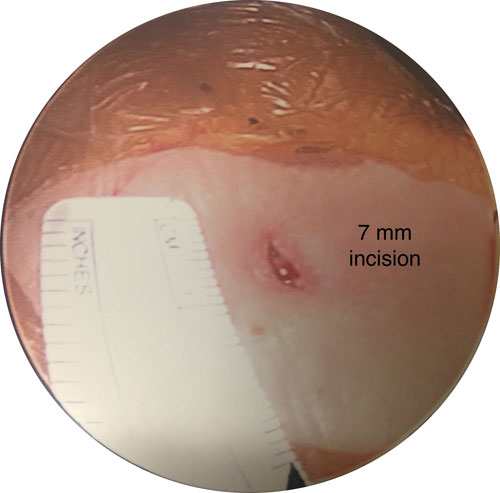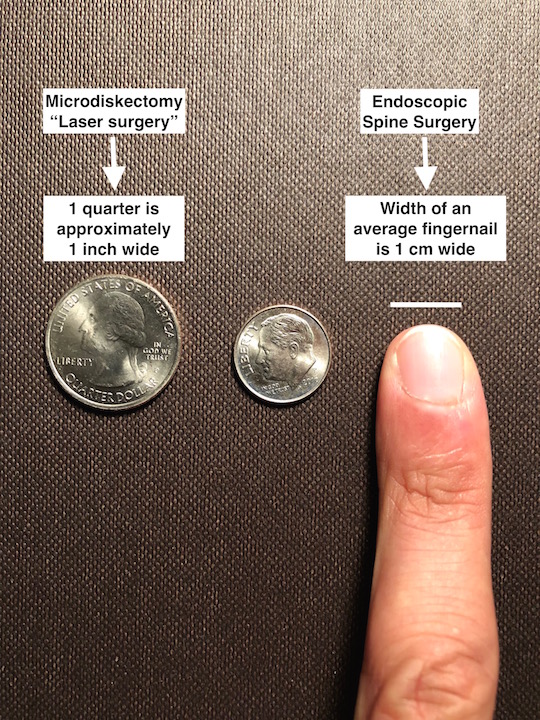What is the difference?
ENDOSCOPIC DISCECTOMY
- uses a scope 6mm to 10mm in size
- incisions are approximately 1 cm
- uses a less invasive approach

LASER MICRODISCECTOMY
- uses tubes 16mm to 26mm in size
- incisions are approximately 1 inch
- uses a traditional tubular approach

SPINE SURGERY IN 1 CM OR LESS


SPINE SURGERY IN 1 CM OR LESS

Endoscopic spine surgery is performed with a 1 cm or less incision – smaller than a dime. The above pictures show incisions for two endoscopic discectomies. These incision are smaller than what is popularly advertised in the media as “laser surgery.” Many “laser” procedures will use standard tubular retractors, with incisions roughly 1 inch in length (as a reference, there are 2.54 centimeters in 1 inch). An endoscopic spine incision is less than half the length of a typical laser microdiscectomy. Differences in length shown below:
The use of the word “laser” in spine surgery continues to cause immense confusion. People frequently think that surgeons are just zapping away discs with lasers by pressing a button. This is not the case. Lasers are simply tools that are used to burn tissue or remove bone. Lasers, ablators, ultrasonic devices, and burrs are all instruments that accomplish similar goals. Today these devices are usually used with standard microdiscectomy tubes that are around 1 inch in size. Some endoscopic procedures can use a laser, but this is not necessary. With endoscopy, the surgeon uses a camera/scope instead of a larger retractor.
Endoscopy is a procedure that uses a different approach, tool, and technique than seen with laser or ultrasonic surgeries. This difference explains why the incisions are much smaller with endoscopics than the other procedures mentioned above. The endoscopic approach also minimizes damage to important muscles and tissues in the spine.



